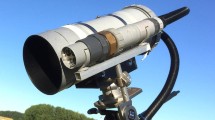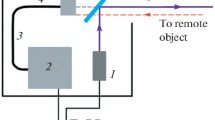Abstract
We performed for the first time experiments on laser remote sensing of the moisture content of biological objects essential for the agricultural industry. Probing was carried out using a fluorescence lidar based on a pulsed solid-state laser (527 nm, 5 ns, 1 kHz, 200 μJ/pulse), developed at the Prokhorov General Physics Institute, Russian Academy of Sciences, and a gated intensified charge coupled device camera. The spectra of laser fluorescence of various biological objects of plant origin were recorded at different humidity values. The loss of water was accompanied by the degradation of biological pigments, causing an uneven increase in the intensity of bands in the fluorescence spectrum for different spectral ranges. The ratio of the spectral bands of chlorophyll a (680 nm) and protochlorophyllide (630 nm) has the best correlation with residual moisture, which opens up a promising direction for lidar measurement and monitoring of moisture/dry matter in silage or perennial grasses.




Similar content being viewed by others
REFERENCES
F. Driehuis, Agric. Food Sci. 22, 16 (2013).
E. A. Nikitin, Innov. Sel’sk. Khoz-ve, No. 2, 53 (2019).
V. V. Kirsanov et al., Agroinzheneriya 1 (1), 10 (2021).
J. Kanski, J. B. Pys, and P. Gorka, J. Anim. Feed Sci. 22, 360 (2013).
Yu. I. Blokhin, Kormoproizvodstvo, No. 6, 39 (2018).
G. Rego et al., Comput. Electron. Agric. 175, 105578 (2020).
V. N. Lednev et al., Opt. Lett. 41, 4625 (2016).
J. H. Churnside, Proc. SPIE 53, 51405 (2013).
S. M. Pershin, Phys. Vibr. 9, 192 (2001).
A. N. Misra, M. Misra, and R. Singh, Biophysics, Ed. by A. N. Misra (InTech Open Access, Rijeka, 2012), p. 171.
M. Ya. Grishin, Phys. Dokl. 66 (2021, in press).
A. F. Bunkin et al., Phys. Wave Phenom. 18, 230 (2010).
S. M. Pershin et al., Phys. Wave Phenom. 20, 212 (2012).
B. Mysliwa-Kurdziel et al., Photochem. Photobiol. 78, 205 (2003).
R. Pedrós et al., Photochem. Photobiol. Sci. 7, 498 (2008).
Funding
This work was supported by a grant in the form of a subsidy aimed at carrying out large scientific projects in priority areas of scientific and technological development (agreement no. 075-15-2020-774).
Author information
Authors and Affiliations
Corresponding author
Additional information
Translated by O. Zhukova
Rights and permissions
About this article
Cite this article
Grishin, M.Y., Lednev, V.N., Sdvizhenskii, P.A. et al. Lidar Monitoring of Moisture in Biological Objects. Dokl. Phys. 66, 273–276 (2021). https://doi.org/10.1134/S1028335821100050
Received:
Revised:
Accepted:
Published:
Issue Date:
DOI: https://doi.org/10.1134/S1028335821100050




